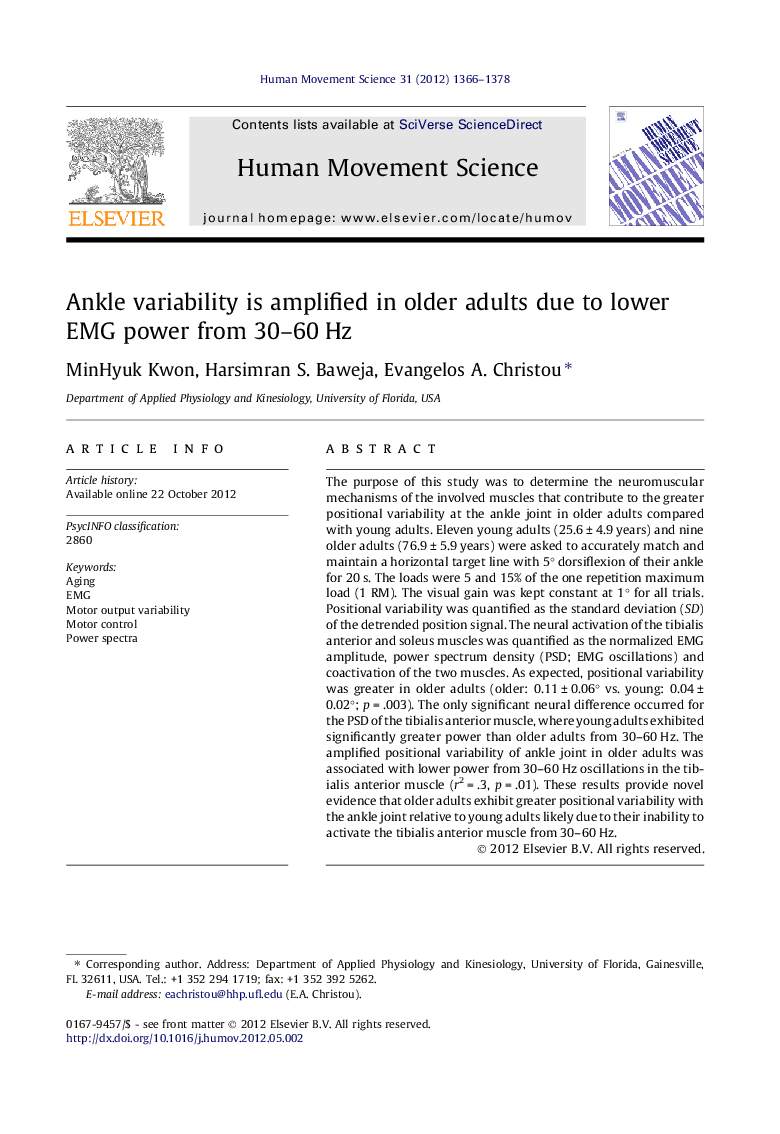| Article ID | Journal | Published Year | Pages | File Type |
|---|---|---|---|---|
| 928503 | Human Movement Science | 2012 | 13 Pages |
The purpose of this study was to determine the neuromuscular mechanisms of the involved muscles that contribute to the greater positional variability at the ankle joint in older adults compared with young adults. Eleven young adults (25.6 ± 4.9 years) and nine older adults (76.9 ± 5.9 years) were asked to accurately match and maintain a horizontal target line with 5° dorsiflexion of their ankle for 20 s. The loads were 5 and 15% of the one repetition maximum load (1 RM). The visual gain was kept constant at 1° for all trials. Positional variability was quantified as the standard deviation (SD) of the detrended position signal. The neural activation of the tibialis anterior and soleus muscles was quantified as the normalized EMG amplitude, power spectrum density (PSD; EMG oscillations) and coactivation of the two muscles. As expected, positional variability was greater in older adults (older: 0.11 ± 0.06° vs. young: 0.04 ± 0.02°; p = .003). The only significant neural difference occurred for the PSD of the tibialis anterior muscle, where young adults exhibited significantly greater power than older adults from 30–60 Hz. The amplified positional variability of ankle joint in older adults was associated with lower power from 30–60 Hz oscillations in the tibialis anterior muscle (r2 = .3, p = .01). These results provide novel evidence that older adults exhibit greater positional variability with the ankle joint relative to young adults likely due to their inability to activate the tibialis anterior muscle from 30–60 Hz.
► We extend previous studies by comparing positional control in young and older adults. ► Older adults exhibit greater ankle positional variability compared with young. ► Ankle variability is amplified in older adults due to lower EMG power from 30–60 Hz.
